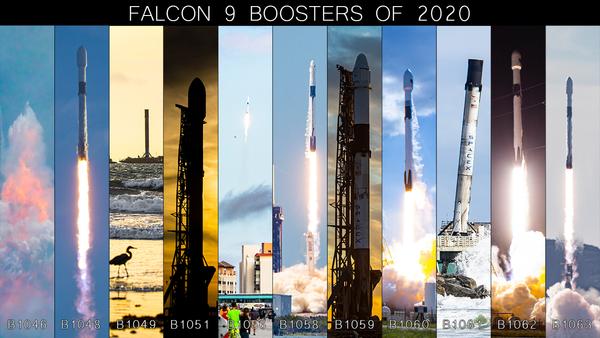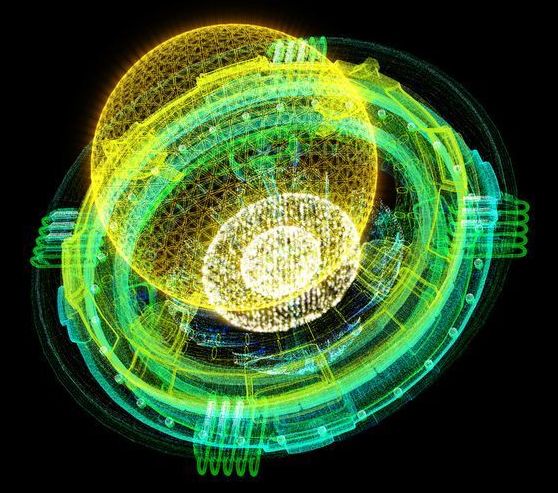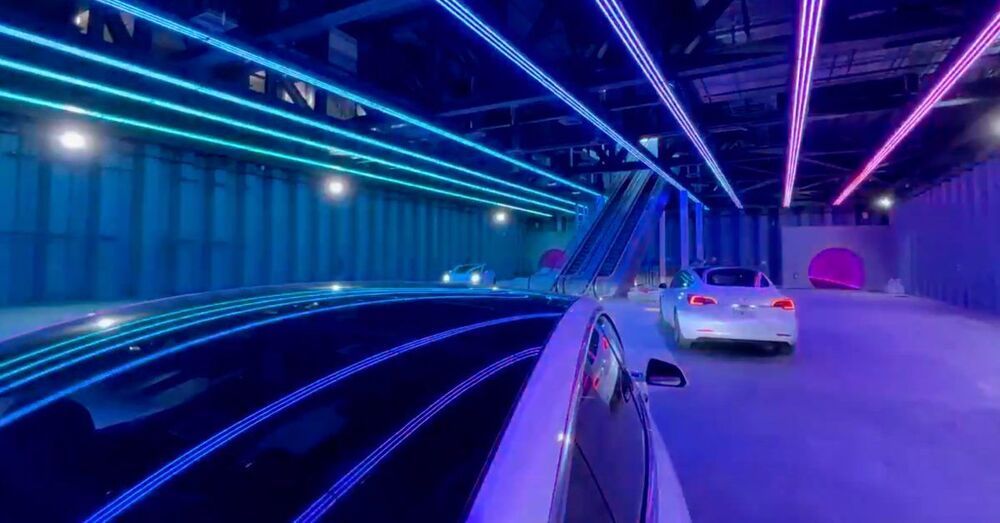Cryptocurrency and direct democracy.
SpaceX recently sparked controversy after stating it would not recognise international law in outer space.
Cryptocurrency and direct democracy.
SpaceX recently sparked controversy after stating it would not recognise international law in outer space.

SpaceX’s fleet of reusable Falcon 9 rockets enabled it to conduct more missions in 2020 than ever before. SpaceX completed a record-breaking launch manifest this year, it conducted 26 rocket launches –the most annual launches it has performed in history. Rocket reusability has played a significant role in increasing launch cadence. Falcon 9 is capable of launching payload to orbit and returning from space to land vertically on landing pads and autonomous droneships at sea. To date, SpaceX has landed 70 orbital-class Falcon 9 boosters and reused 49. This year the company accomplished flying two particular rocket boosters 7 times. Engineers aim to reuse a first-stage booster at least 10 times to reduce the cost of spaceflight. The most reused Falcon 9 rockets that reached 7 reflights this year are two first-stage boosters identified as B1051 and B1049. SpaceX is just three flights away from achieving 10 reflights. SpaceX officials state Falcon 9 [Block 5] is designed to perform up to 100 reflights.
Stephen Marr, a spaceflight photographer who goes by the name @spacecoast_stve on Twitter, shared a photo collage of all the Falcon 9 boosters used in 2020, “SpaceX carried out a record-breaking 26 launches this year, but how many boosters did it take to get it done? The answer is 11. And here they are!” he wrote. SpaceX founder Elon Musk replied to Marr’s tweet –“Falcon was 25% of successful orbital launches in 2020, but maybe a majority of payload to orbit. Anyone done the math?” he said.
The journey to see future technology starts in 2022, when Elon Musk and SpaceX send the first Starship to Mars — beginning the preparations for the arrival of the first human explorers.
We see the evolution of space exploration, from NASA’s Artemis mission, humans landing on Mars, and the interplanetary internet system going online. To the launch of the Starshot Alpha Centauri program, and quantum computers designing plants that can survive on Mars.
On Earth, tech evolves with quantum computers and Neaulink chips. People begin living with bio-printed organs. Humans record every part of lives from birth. And inner speech recording becomes possible.
And what about predictions further out into the future, when humans become level 2 and level 3 civilizations. When NASA’s warp drive goes live, and Mars declares independence from Earth. Will there be Dyson structures built around stars to capture their energy. Will they help power computers that can take human consciousness and download it into a quantum computer core. Allowing humanity to travel further out into space.
Quotes about the future from: Arthur C. Clarke, Stephen Hawking, Albert Einstein, and Elon Musk.
Additional footage sourced from: NASA, SpaceX.
Elon Musk has been a vocal critic of artificial intelligence, calling it an “existential threat to humanity”. He is wrong, right?
Musk is heavily invested in AI research himself through his OpenAI and NeuroLink ventures, and believes that the only safe road to AI involves planning, oversight & regulation. He recently summarized this, saying:
“My recommendation for the longest time has been consistent. I think we ought to have a government committee that starts off with insight, gaining insight… Then, based on that insight, comes up with rules in consultation with industry that give the highest probability for a safe advent of AI.”
Across dozens of media appearances, Musk’s message about AI has indeed been remarkably consistent. He says it’s dangerous, and says it needs regulation, or else “AI could turn humans into an endangered species”.
Watch Elon Musk at the WSJ CEO Council Summit talk about future plans for Tesla and SpaceX. Musk also reveals why he moved to Texas and shares his advice for business leaders.
More from the Wall Street Journal:
Visit WSJ.com: http://www.wsj.com.
Visit the WSJ Video Center: https://wsj.com/video.
On Facebook: https://www.facebook.com/pg/wsj/videos/
On Twitter: https://twitter.com/WSJ
On Snapchat: https://on.wsj.com/2ratjSM
#WSJ #Tesla #SpaceX
Elon Musk hopes to send first humans to Mars aboard a Starship craft within the next four years.


LOS ANGELES, CA / ACCESSWIRE / December 7, 2020 / US Nuclear (OTCQB: UCLE) is the prime contractor to build MIFTI’s fusion generators, which could be used in the relatively near future to power the propulsion systems for space travel and provide plentiful, low-cost, clean energy for the earth and other planetary bases once our astronauts get to their destination, be it the moon, Mars, Saturn or beyond. Chemical powered rockets opened the door to space travel, but are still far too slow and heavy even to travel to distant planets within our solar system, let alone travel to other stars. Accordingly, NASA is now looking to nuclear powered rockets that can propel a space vessel at speeds close to the speed of light and thermonuclear power plants on the moon and Mars, as these are the next steps towards space exploration and colonization.
The US Energy Secretary, Dan Brouillette, recently said, “If we want to engage in outer space, or deep space as we call it, we have to rely upon nuclear fuels to get us there… that will allow us to get to Mars and back on ‘one tank of gas’.” This is made possible by the large energy density ratio which makes the fuel weight for chemical fuels ten million times higher than the fuel that powers the fusion drive. NASA is now relying on private companies to build spaceships: big companies like Boeing, but more and more on high-tech startups such as Elon Musk’s Space-X, Jeff Bezos’s Blue Origin, and Richard Branson’s Virgin Atlantic.
While nuclear fission has been considered as a basis for the next generation of rocket engines, the fuel used for fission is enriched uranium, which is scarce, costly, unstable, and hazardous. On the other hand, thermonuclear fusion uses a clean, low-cost isotope of hydrogen from ordinary seawater, and one gallon of this seawater extraction yields about the same amount of energy as 300 gallons of gasoline.


Elon Musk’s Boring Company has released the first images teasing the first passenger station of the Las Vegas Loop ahead of its launch.
A Boring Company Loop system consists of tunnels in which Tesla autonomous electric vehicles travel at high speeds between stations to transport people within a city.
The first system is being deployed at the Las Vegas Convention Center (LVCVA), which is paying $50 million for the system, but we recently learned that the Boring Company plans to connect the convention center’s Loop to casinos on the strip in order to eventually create a city-wide Loop in Las Vegas.